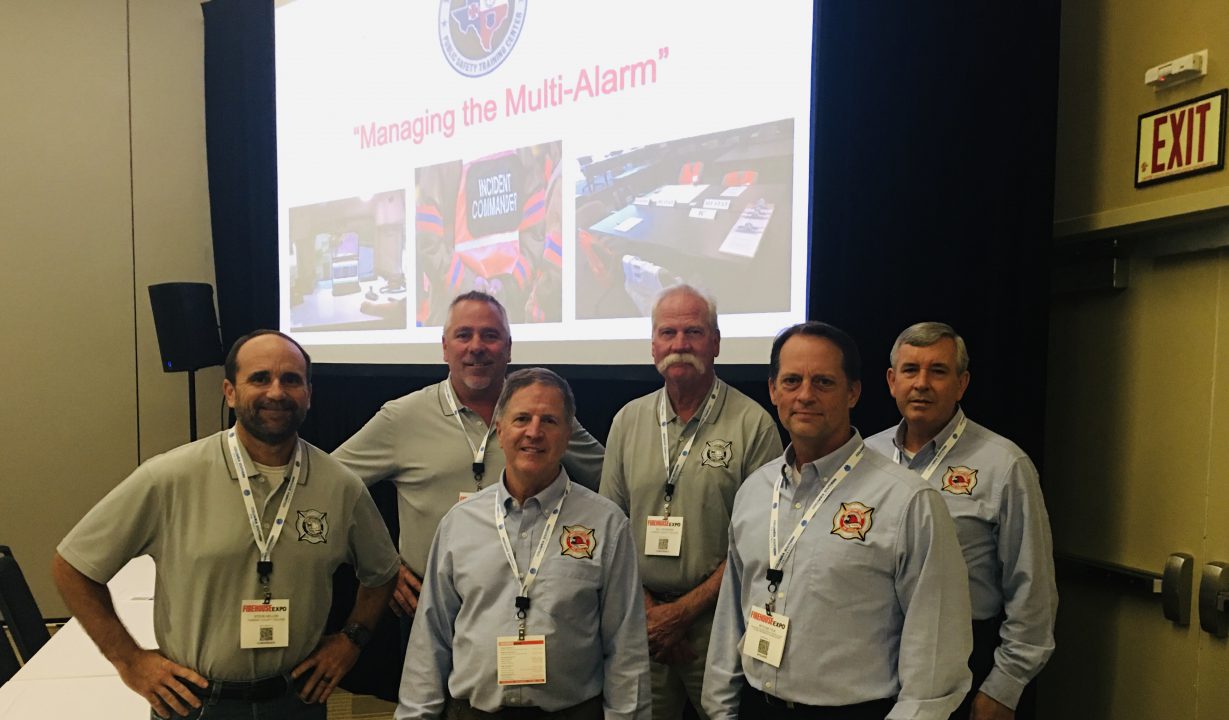Mike Noyes, Jeff Holloway and Ritchie Tice, adjuncts at TCC Northwest’s Public Safety Training Center, presented “Managing the Multi-Alarm” at the 2021 Firehouse Expo in Columbus, Ohio in September. The Firehouse Expo is the premier national conference for Fire/Rescue professionals.
“Mike, Jeff and Ritchie have many years of experience on this. When they go to a national conference and say they’re from TCC, half of the attendees are Googling TCC and then they see the other things we do,” says Steve Keller, the director of the Public Safety Training Center at TCC Northwest.
A multi-alarm fire is different from a single-alarm fire in that they are much more complex, with lots of moving parts. They are also managed differently. According to Noyes, single-alarm fires are generally house fires and can be managed out in the field by a single incident commander. A multi-alarm fire is a more complex fire that needs to be managed from a command post or emergency operations center and likely cannot be managed by a single person.
“These kinds of fires don’t happen very often,” explains Tice. “Most incident commanders don’t train on multi-alarm fires, and so they are ill prepared to handle them when it happens.”
Noyes explains that experience with single-alarm fires actually works against incident commanders in these situations. “Oftentimes incident commanders don’t have anyone helping them on single-alarm fires, so they get into the mindset of doing it by themselves, and they can do this effectively for a single-alarm fire,” he says, “but in a multi-alarm fire, it takes a team in the command post. They need to know who should be on that team, who needs to be involved and what roles they need to play.”
Noyes, Hollway and Tice have all been teaching in the Fire/Rescue Program at TCC Northwest since the mid-1990s. Noyes and Holloway are both retired battalion chiefs and Tice is currently a battalion chief with the Grapevine Fire Department. The idea for this training came from a gap they identified in the training, development and experience of incident commanders in the field.
According to Noyes, the experiential nature of the training was a priority as they developed it. “We use some lecture, but 80 percent or more is simulation-based training,” including animations of burning buildings.
“A big part of it is designing the simulation – not only what they see, but the input they get from the radio traffic, which we provide to them,” he says. “We design the simulations with certain goals in mind, to get at different aspects of working with their teams.”
The experience gained in participating in simulations will translate directly into the situations incident commanders may find themselves in out in the field, particularly for incident commanders who are the first to respond to an incident. “There are 12 to 24 hours sometimes before you get the emergency operations center going,” says Holloway. “The incident commander has to fill that gap to manage the chaos. This training helps with that.”
Aside from the national exposure, Keller highlights the service to TCC’s local community by providing this training at the Public Safety Training Center. “Our community gets this training in their backyard. If there’s a disaster, their incident commanders have gone through this and will be better equipped to respond.”

